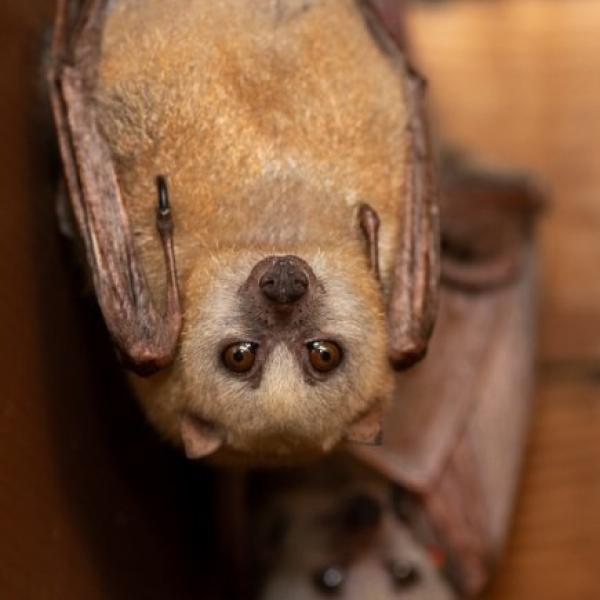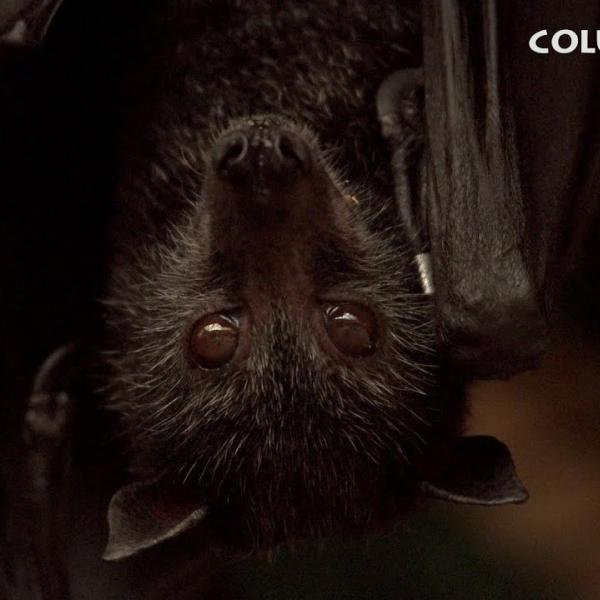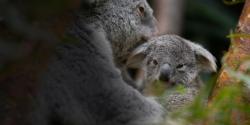All bats are mammals in the order Chiroptera, which means “hand wing.” They are the only mammals with true flight.
Their wings are made up of the bones of their arms and elongated fingers connected with a skin membrane. Golden-mantled flying foxes are sometimes mistaken for baby bats; however, they are actually one of the smallest species of fruit bats. They are in the family Pteropodid, commonly called "flying foxes" because of their dog or foxlike muzzles.
Scientific Name: Pteropus pumilus
Conservation Status: Near Threatened
Size: Approximately 10 inches in length with a wingspan of up to 30 inches
Weight: Up to 8 ounces (Which is the weight of about 80 pennies.)










